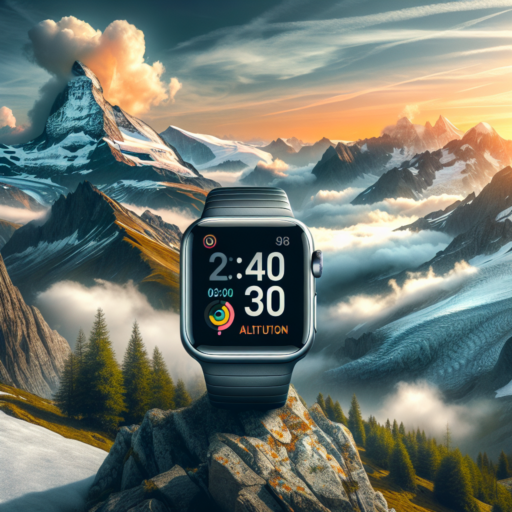No se han encontrado productos.
What is elevation in marathon?
In the context of marathoning, elevation refers to the vertical distance that a runner must navigate during a race. This can include any uphill or downhill sections along the marathon’s course. Elevation is a critical factor that can significantly influence a runner’s performance, strategy, and overall experience during the marathon.
Elevation gains and losses are measured in meters (m) or feet (ft), providing a quantifiable metric of the course’s vertical challenge. Races with higher elevations or more significant elevation changes are often considered more challenging due to the increased physical and psychological demands placed on runners. These challenges include the need for specialized training, adjustments in pace, and even the potential for altitude sickness in extreme cases.
Understanding the elevation profile of a marathon is essential for participants looking to prepare adequately for race day. This includes not only knowing the total elevation gain but also understanding the distribution of hills along the course. Such knowledge allows for targeted training sessions, including hill repeats and altitude training if necessary, to ensure that runners are well-prepared for the specific demands of their chosen marathon.
Can anyone run in the New York City Marathon?
Certainly, the question of whether anyone can participate in the illustrious New York City Marathon sparks interest and curiosity among running enthusiasts and amateurs alike. This event, renowned for its vibrant energy and scenic route through the five boroughs of New York City, is a bucket list item for many. However, securing a spot in this popular marathon involves understanding its unique entry system.
The New York City Marathon primarily admits runners through a lottery system, charity partnerships, and qualifying time standards. This means that while the event is theoretically open to anyone, there are certain paths and requirements that must be met. For instance, the lottery, known for its random selection process, gives hopefuls from around the globe a chance to participate, but with no guarantee of entry.
For those more serious about their running times, achieving a qualifying time in prior races can secure a place in the marathon. These time standards are set by the New York Road Runners (NYRR) and are based on age and gender. It’s a challenging route, but for seasoned runners, it’s a tangible goal.
Lastly, running for a cause is another avenue through which individuals can gain entry. Partnering with official charity organizations affiliated with the marathon allows participants to raise funds and awareness for a myriad of causes. This method not only guarantees a spot in the race, assuming fundraising goals are met, but also adds a layer of purpose to the participant’s running journey.
In summary, the New York City Marathon embodies a spirit of inclusivity, albeit through a competitive selection process. Whether through the luck of the draw, achieving stringent running criteria, or dedicating their run to charity, hopefuls have various methods at their disposal to join this prestigious race. This structure ensures a diverse mix of runners from around the world, each with their own story and reason for running.
What is the hottest NYC Marathon ever recorded?
The New York City Marathon, known for its vibrant energy and diverse participation, has seen a wide range of weather conditions over the years. However, discussions about the marathon’s most challenging weather often bring up the topic of heat. The question of the hottest NYC Marathon ever recorded piques the curiosity of many, especially considering how temperature can significantly impact runners’ performance and overall event safety.
While the NYC Marathon typically enjoys moderate November temperatures, there have been years where the mercury has soared unexpectedly. These spikes in temperature have tested the endurance and preparation of runners, with hydration and cooling strategies becoming critically important. The heat not only affects the athletes but also the planning and response of the event organizers, who must ensure the wellbeing of participants and spectators alike.
Understanding the impacts of elevated temperatures during such a demanding event provides valuable insights not just for athletes, but also for those involved in organizing and supporting marathon events in general. It’s a poignant reminder of the challenges posed by weather variability, emphasizing the importance of flexibility and preparedness in the world of outdoor sporting events.
How do I get into the NYC Marathon?
Getting into the NYC Marathon, one of the world’s most prestigious running events, requires planning, preparation, and sometimes, a bit of luck. There are several avenues you can explore to secure your place at the starting line.
Qualifying Times
If you’re a particularly fast runner, securing a spot in the NYC Marathon through qualifying times might be your ticket in. The required times vary by age and gender, and it is imperative to have completed a certified course to have your time considered.
Lottery System
For many, the lottery system is the most accessible route to participate in the NYC Marathon. Each year, thousands of runners enter the drawing, hoping for one of the coveted spots. The selection is random, so everyone has an equal chance, making it a fair, albeit uncertain, method of entry.
Charity Entries
Another popular way to gain entry is by running for a charity. This involves raising a specified amount of funds for one of the official charity partners of the NYC Marathon. Not only does this method provide you with a guaranteed spot, but it also adds an aspect of purpose to your participation, as you’re supporting a good cause.




